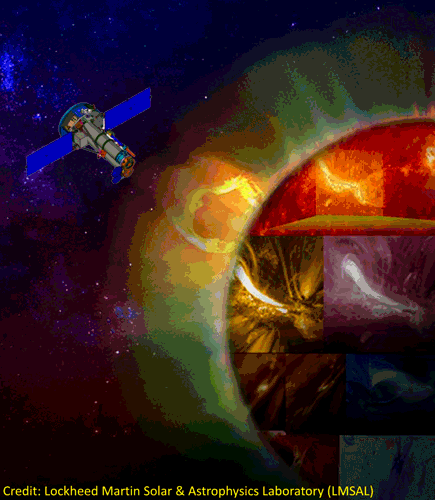MUSE
The primary goal of the MUlti-slit Solar Explorer (MUSE) is to understand the physical processes that heat the multi-million degree atmosphere (the corona) of the Sun, that are at the roots of the solar wind, driving solar activity such as flares and coronal mass ejections that impact Earth.
MUSE is NASA’s first mid-size explorer (MIDEX) focused on solar physics. MUSE will provide the unprecedented combination of simultaneous spectroscopy and imaging of the solar corona at very high spatial resolution of 0.33 to 0.4” (resolving structures as small as 250 km on the Sun) while increasing the areal coverage and cadence by a factor of 30 to 100 compared to previous or planned spectrographs. The innovative multi-slit spectrograph will allow scientists to exploit the properties of the light from the Sun to determine detailed diagnostics of the plasma (ionized gas) in the Sun’s atmosphere, including temperature, velocity and turbulent motions, over active region size fields-of-view within an 8 to 20 second time resolution.
A key part of the MUSE science investigation is the comparison between advanced numerical modeling and high-resolution observations. MUSE will enable detailed studies of the multi-scale coupling of physical processes in the solar atmosphere, in which energy is often released on very small spatial scales of order a few 100 km or less, but can rapidly impact hundreds of thousands of km when, for example, magnetic fields become unstable and lead to large explosions (flares) or eruptions (coronal mass ejections). When such events propagate from the Sun into the solar system, they lead to “space weather”, and often impact space-based and ground-based technological resources on Earth such as satellites, communications, power grids, etc.
MUSE will provide key data to better understand how space weather events are triggered and propelled into the heliosphere.
Lockheed Martin Solar & Astrophysics Laboratory (LMSAL) at LM’s Advanced Technology Center (LM ATC) in Palo Alto, CA leads the MUSE project which includes contributions from many research institutes in the USA and abroad (see team.html for details).

)